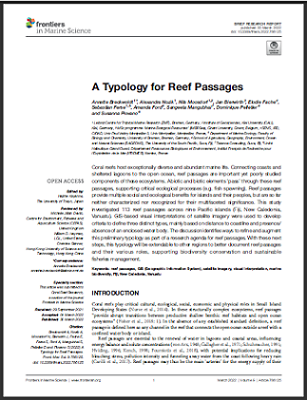
Coral reefs host exceptionally diverse and abundant marine life. Connecting coasts and sheltered lagoons to the open ocean, reef passages are important yet poorly studied components of these ecosystems. Abiotic and biotic elements ‘pass’ through these reef passages, supporting critical ecological processes (e.g. fish spawning). Reef passages provide multiple social and ecological benefits for islands and their peoples, but are so far neither characterized nor recognized for their multifaceted significance. This study investigated 113 reef passages across nine Pacific islands (Fiji, New Caledonia, Vanuatu). GIS-based visual interpretations of satellite imagery were used to develop criteria to define three distinct types, mainly based on distance to coastline and presence/absence of an enclosed water body. The discussion identifies ways to refine and augment this preliminary typology as part of a research agenda for reef passages. With these next steps, this typology will be extendable to other regions to better document reef passages and their various roles, supporting biodiversity conservation and sustainable fisheries management.












